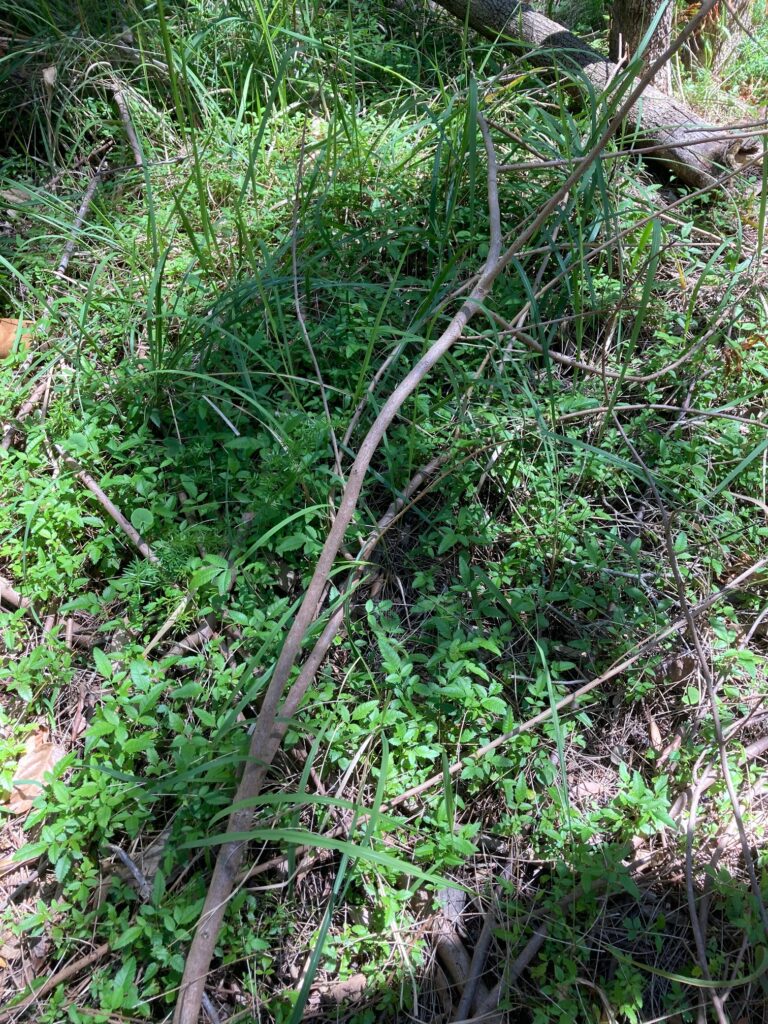Wes Mason and I spent this morning inspecting the swale south of BA49 that has been covered in Broad-Leaf Peppers (Schinus terebinthifolius). The drilling and injecting of the Peppers with 50% glyphosate that we did last year has proved highly effective in killing all the trees injected except for the large branch of one tree. This reinforces the need to inject at the junction of all low branches to ensure full vascular system uptake and circulation of the glyphosate. There was no evidence of root suckering or coppice growth from injected trees.
What we did find was the presence of literally hundreds of small Pepper seedlings, presumably from seed fall from the killed peppers, plus a number of small sapling sized Pepper regeneration (not root suckers). This was interesting as the same profusion of seedling regeneration was not observed at other sites where we have injected and killed Peppers – BA48 foredune and BA51 mid and foredune. Possibly the reason for such seedling regeneration is the fertile, damp, loamy soil, as distinct from mainly sand with minimal organic matter at the other sites. Hence the profusion of Peppers in and on the edge of this swale. As Wes very wisely pointed out, such regeneration is a reason to follow up after drilling and injecting, particularly during the main growing season starting about October.

We then proceeded to inject all the remaining Peppers (about 30) we could find. I have also found that when the Pepper stems are too small for drilling and injecting (less than 20mm), frilling and then swabbing with glyphosate seems to work well in killing the trees. We also hand pulled some ten of the sapling-sized seedlings. A working bee for our Bushcare Group will follow up in November and remove the many small seedlings and saplings.
I shall follow up with more injecting of Peppers on the foredune of BA48, while Wes plans more injecting of Peppers working north from BA51 from where we earlier killed some 25 trees. He is also planning to remove Asparagus Fern which has come in after the canopy has been opened up. We also need to cut some branches from killed Peppers that are inhibiting growth of native trees.
Paul
